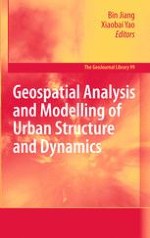
2010 | OriginalPaper | Buchkapitel
1. Geospatial Analysis and Modeling of Urban Structure and Dynamics: An Overview
verfasst von : Bin Jiang, Xiaobai Yao
Erschienen in: Geospatial Analysis and Modelling of Urban Structure and Dynamics
Verlag: Springer Netherlands
Aktivieren Sie unsere intelligente Suche, um passende Fachinhalte oder Patente zu finden.
Wählen Sie Textabschnitte aus um mit Künstlicher Intelligenz passenden Patente zu finden. powered by
Markieren Sie Textabschnitte, um KI-gestützt weitere passende Inhalte zu finden. powered by